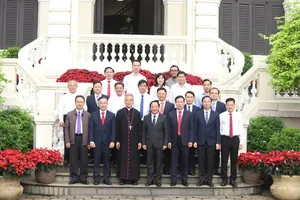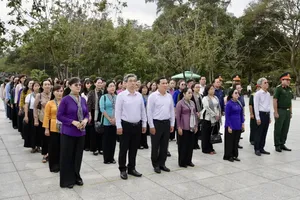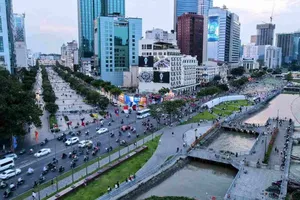The seismic zoning map of Vietnam reveals that a 6-6.2 magnitude earthquake might occur on the sea, leading to a minor possibility of tsunami with a height of around 0.65m. This means its wave crest is lower than the ground. In HCMC, the place that may see such a tsunami is Can Gio water. Even so, the city should be well-prepared.
As to earthquake incidents, in the Southern region of Vietnam, especially in HCMC, current faults are able to create an earthquake as strong as 5.5 magnitude and trigger level-7 tremors. For instance, the series of earthquakes M4.5-5.5 in 2004, 2005, and 2007 in the Southern sea of Vietnam caused certain aftershocks that made some high-rise buildings in the city to vibrate slightly with no clear damage.
To limit possible damages, the propaganda plan for earthquake and tsunami in 2022 of HCMC details proper responses. Accordingly, when a tsunami is spotted, people must immediately leave their ship parked at the port and move to a higher place that is opposite to the sea. Ships at sea are not allowed to return to shore until the last news of the tsunami is announced.
When an earthquake is detected, the general rule is not to escape the building as tremors are happening. When feeling vibration, people should move to a safe place and hide there until these tremors stop to exit the building. If staying inside a high-rise building, it is not advisable to use an elevator during an earthquake, nor is it wise to create a congestion in the stairs. When moving around in such an incident, people should have a strong object to cover their head. A flashlight, not a candle, should be used if a power outage happens to avoid fire.
People on the street when an earthquake happens should stay away from high-rise buildings, tall trees, and power lines. People in their vehicles should stop at the curb far away from electric poles and lines, not under bridges.


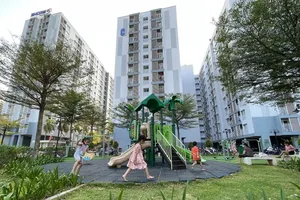

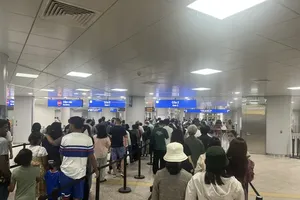
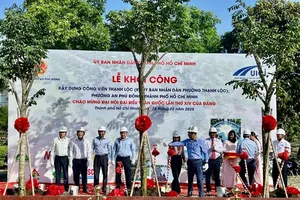

)

